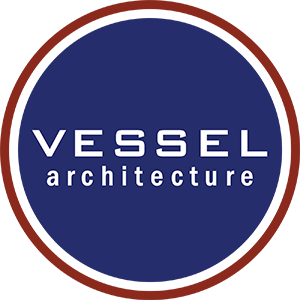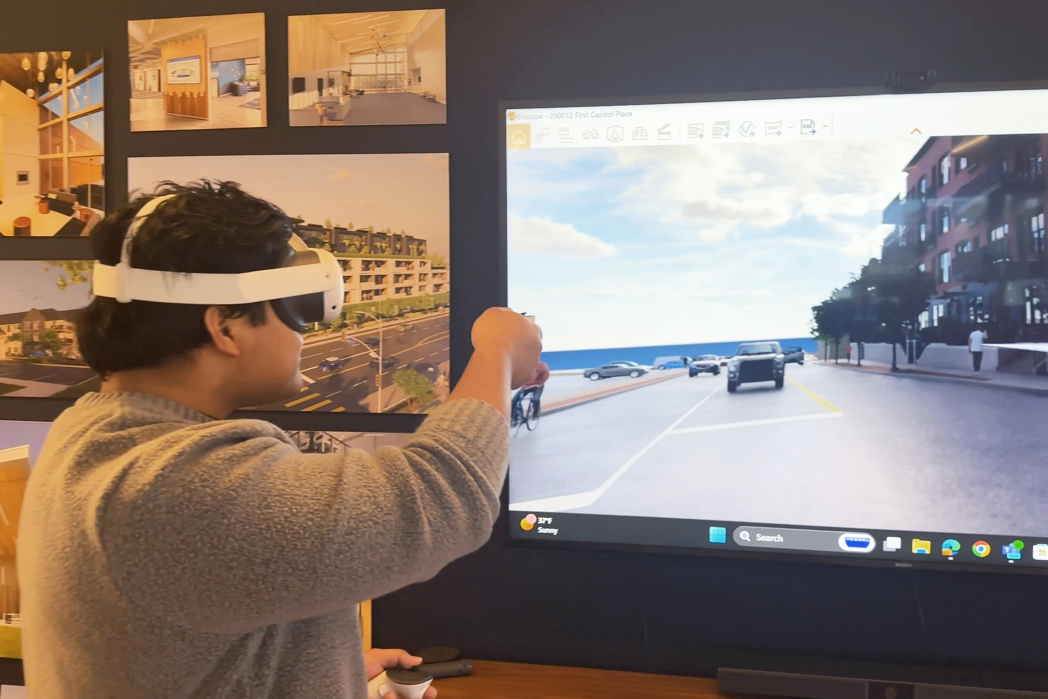Beyond Blueprints: How Virtual Reality is Changing Residential Architecture
Here at Vessel, I've witnessed firsthand the transformative power of Virtual Reality (VR) in reshaping the landscape of residential architecture. VR, a technology that creates computer-generated simulations of three-dimensional environments, has become a cornerstone of our design and communication process. It offers an unparalleled experience that bridges the gap between our architectural visions and our clients' perceptions, enabling them to walk through their future homes in a way that was previously unimaginable.
The VR Difference
Integrating VR into our workflow has revolutionized not only how our clients experience architecture but also how we approach design. Traditional methods of presenting designs through renderings and floor plans, while effective to an extent, often fall short of conveying the full scope of a project. VR, on the other hand, allows clients to truly inhabit their future spaces, giving them the ability to notice details, identify potential issues, and express preferences in ways that influence the design process. This technology allows us to communicate complex architectural concepts in a digestible and engaging manner, reducing misunderstandings, and aligning expectations from the outset.
Enhancing Creativity and Collaboration
VR has positively impacted my creative process. At Vessel, we leverage VR from the earliest stages of design, continuously using it as a tool for exploration, presentation, and refinement. It's a practice that has not only improved our internal workflows but has also enhanced our clients' understanding and engagement with the design process. There's a significant difference in the feedback and insights we receive from clients when they can freely explore and interact with their space in VR compared to when they're looking at static images. This level of immersion leads to richer, more organic feedback, enabling us to tailor our designs more closely to our clients' needs. The collaborative nature of VR sessions fosters a deeper connection between our team and our clients, making the design process a shared journey.
One particularly memorable moment vividly illustrates the impact of VR on our design process and client satisfaction. The project involved a client seeking to create an addition and a backyard oasis. This project was not just about adding a pool house and additional garage space but reimagining the entire outdoor living area. While these extensive changes were the focal points of our design, it was their reaction to a minor adjustment—the reconfiguration of the entryway between the garage and the kitchen—that truly underscored the impact of VR. This seemingly small change was the highlight of the client’s experience, as the change significantly enhanced the flow and functionality of their home. The ability to virtually inhabit the space allowed the client to pinpoint what truly mattered to them, guiding us to refine our design in a way that deeply resonated with their daily life.
One of the most compelling aspects of using VR in residential architecture is its ability to simulate real-world conditions, such as sun paths and lighting conditions, at different times of the day or year. This capability has been invaluable in informing our design decisions, particularly in the placement of windows and outdoor living areas. By providing clients with a virtual experience of how light interacts with their space, we can make informed decisions that enhance the comfort, functionality, and aesthetic appeal of their homes.
The Intangible Impact
The emotional impact of walking through a virtual model of their home, as opposed to viewing renderings or floor plans, cannot be overstated. Through VR, clients don't just observe; they engage with the design on a personal level, informed by their routines, preferences, and dreams. This experience fosters a deep connection, transforming their perception from seeing a proposed design as an abstract concept to experiencing it as a tangible reality. The emotional resonance of this interaction is profound, creating a sense of attachment and ownership that flat images cannot replicate. It's this depth of experience that elevates VR from a mere tool to a critical component in crafting homes that reflect the aspirations and essence of the people who will live in them.
Overcoming Challenges and Exploring New Horizons
Despite the clear benefits, integrating VR into our practice has not been without challenges. Clients often become distracted due to the difficulties in navigating the virtual environment. To address this, we've been refining our approach to guide the VR experience more effectively. Additionally, the technical demands of VR, including the need for high-powered computing and sophisticated software, have pushed us to continually invest in and upgrade our technology infrastructure. We've even assembled a custom PC equipped with some of the best hardware available to ensure a seamless and immersive experience for our clients. Looking ahead, we're excited about the potential of emerging technologies, such as artificial intelligence, to further enhance the VR experience. We're constantly exploring new tools and techniques to stay at the cutting edge of architectural design and client service.
VR has fundamentally changed the way we communicate and collaborate with our clients at Vessel. It has made the design process more interactive, engaging, and satisfying for everyone involved. As we continue to explore the possibilities of this technology, I'm convinced VR will remain an essential tool in our quest to create places where our clients will flourish.


